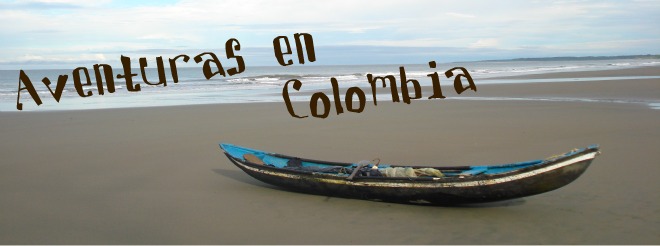"Well that's why you never see cows going down stairs; their legs lock up."
"What are you talking about? Sure they can."
"No, they can't. Have you ever seen a cow going down stairs? They can only go up them."
"Well then I'll have to check the upper floor of my house to make sure there are no stranded cattle up there to be sure. Why would a cow even be near stairs?"
 |
| Tell me, vaca: how do you feel about stairs? |
Mike, Peter, and Matt arrived to Cali on Friday. I showed them around the city and on Sunday we hopped a flight to Santa Marta. After a great night at the hotel Casa Aluna, we were met Monday morning bright and early by our machete-weilding guide, Juan Carlos. From there we picked up the rest of our hiking group - two Czech girls and a German girl - and drove three hours into the mountains as far as the bumpy dirt road allowed the Jeep to go.
The first part of the hike is through campesino land; cultivated country-side, sparsely populated by farmers, donkeys, and chickens. The second half of the hike was through land designated for the Kogi indians, a group of indigenous people who have cautiously embraced tourism while remaining fiercely private and holding to their ancestral way of life.
 |
| Some Kogi children in the hills. |
The Kogi, dressed in white tunic-like clothing, were present at various turns, either walking the same trails we were - though often barefoot - or hidden in the forest and would whisper a quiet response when greeted. The children seemed most interested in the hikers, but as a way to barter for sweets, bracelets, or bandanas. Kogi villages are relatively small, but not terribly far from other settlements. The grass and sugarcane-constructed circular houses have two points at the peak of the roof, symbolic of the two highest summits in the Sierra Nevadas, both over 5,500 meters.
 |
| "Juan Carlos says the 'lost city' is over there." ~Peter on day #1 |
Most of the hiking was either up, down, or, as Juan Carlos prepped us, "varied." Most of our uphill exertions were rewarded with oranges or watermelon wedges and our assents started with a banana and a "good luck."
 |
| 1,200 steps to the top! |
Also like Machu Picchu, the Spanish never found Teyuna. However, in the mid-1970's a breed of grave-robber known in Colombia as the guaquero, did. Archeologists followed, attempting to salvage the damage caused by the guaqueros destructive search for gold. Add to that the various para-military groups hiding in the area, the Kogi communities, poor campesino farmers, and the secret illegal marijuana and coca plant fields and the Sierra Nevadas are not a place you want to find yourself!
"Ciudad Perdida" far exceeded my expectations. I had no idea how expansive it was and as Juan Carlos took us to the various sections of the once-spralling mountain town, every painful step along the trail became worth it.
 |
| Morning sunrise from hammocks at Camp Alfredo. |
 |
| Kogi hut used in the processing of sugar cane at one of the summits along the hike. |
 |
| Taking a break with the guides "Pollito" and Juan Carlos. |
 |
| Welcome to the "lost city" of Teyuna! |
 |
| Did I mention three helicopters landed while we were at the "lost city"? The third one stayed. Supposedly the President was coming later. Hmm... Really happy about that being in my picture. |
Juan Carlos was incredibly knowledgeable, having both grown up on his grandmother's farm in the area and guided tours for close to twenty years, he was always prepared and overflowing with knowledge. Thankfully I have intelligent and inquisitive friends who were more than happy to sit around after dinner most nights, lit only by candles waxed to the tables and test my translating abilities.
The one question that never got asked concerned those stair-climbing cattle. However, if we managed to haul our sorry selves all over that terrain, I'm sure a cow can tackle a few steps. Just let's all agree never to bring this conversation up again. I beg you.



